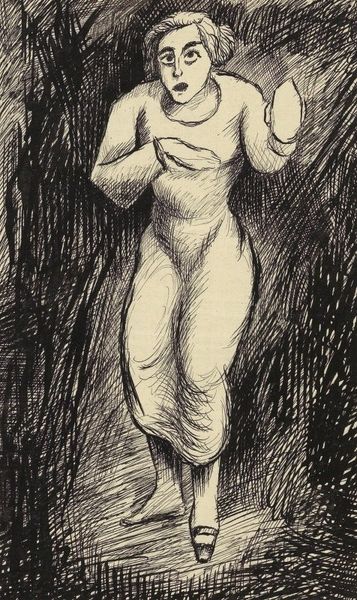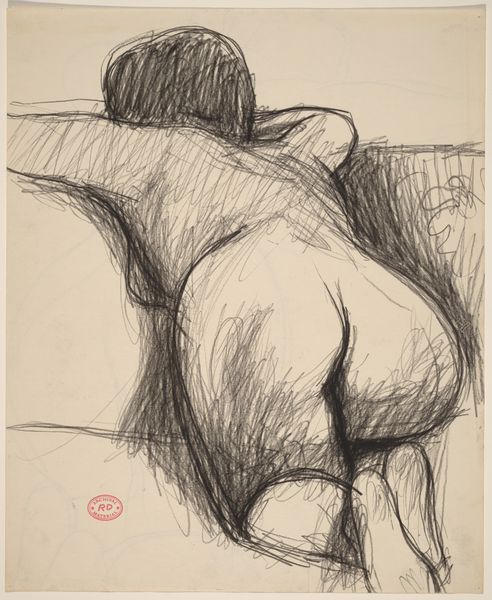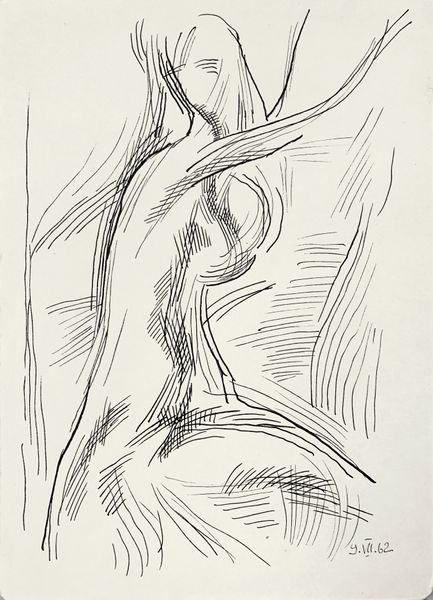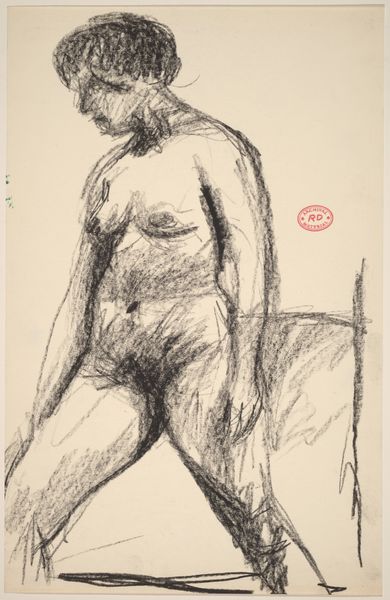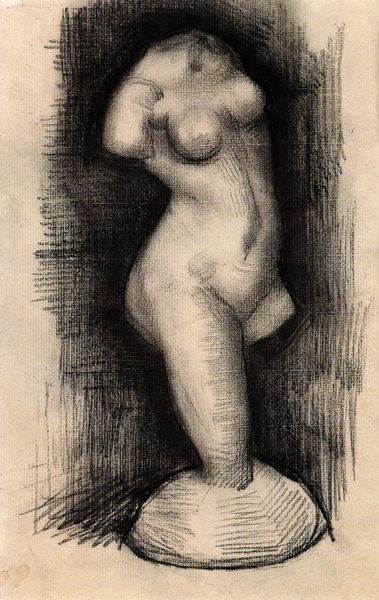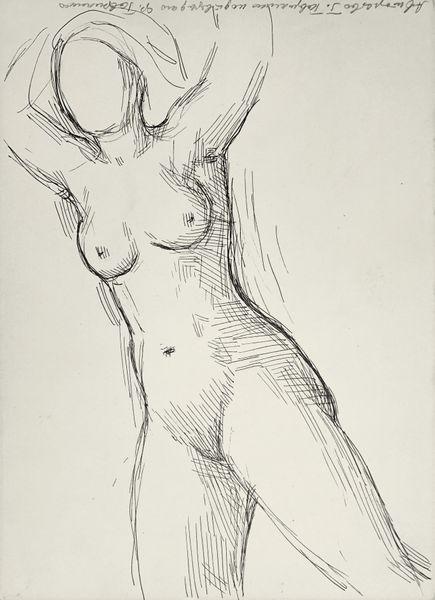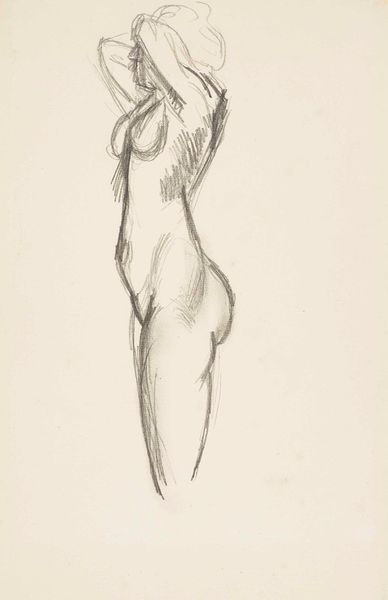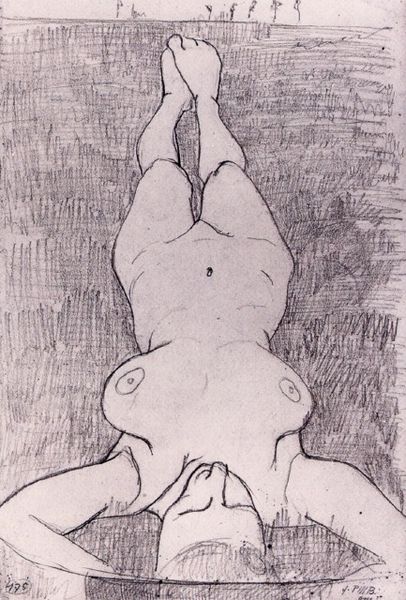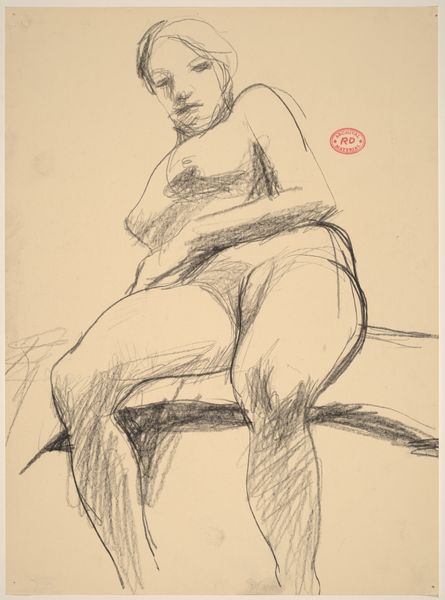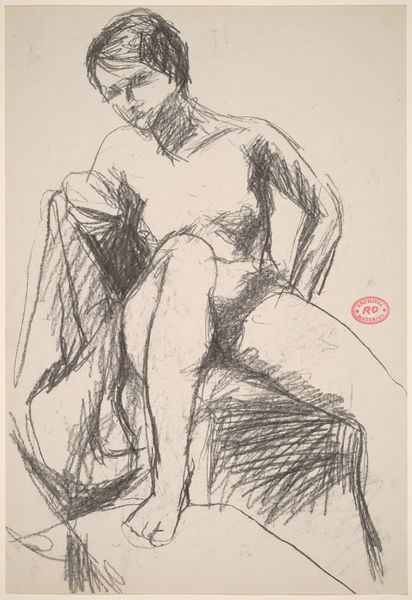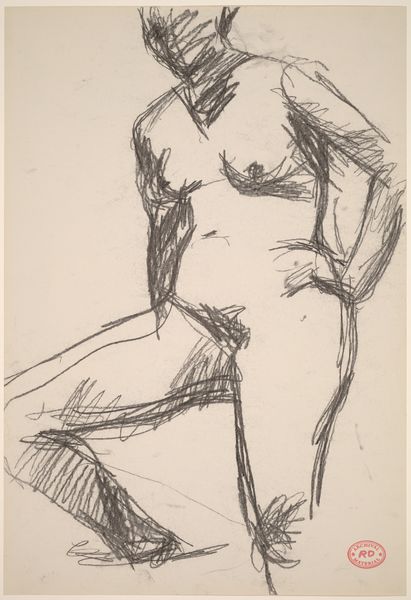
drawing, ink
#
drawing
#
figuration
#
ink
#
post-impressionism
#
nude
Copyright: Modern Artists: Artvee
Editor: This ink drawing is "Nu de dos," or "Back Nude," by Henri Matisse, dating from around 1903 or 1904. It's surprisingly expressive for such a simple, linear work, don't you think? The hatching creates a lot of shadows and movement. What do you see in this piece, especially from an iconographic perspective? Curator: Well, first off, notice how Matisse uses these stark contrasts. It is through the hatching that the figure is alive with sensuality; the nude embodies classical traditions of the female form and subverts them. The face remains shadowed and indistinct, shifting the focus onto the body. But the face remains unformed in this shadowy suggestion: How does it contribute to a more general commentary on desire, do you think? Editor: That’s a good point. The averted gaze, or lack of one, focuses the viewer on the physical form, making it almost like an object of observation rather than a person. It does create an element of timelessness by removing personal identity, too. Curator: Exactly! The absence almost becomes a symbol itself. Matisse asks us to question what we project onto that blank space. The nude’s traditional symbolism intersects here with the budding ideas of modernity, disrupting a seamless narrative. What emotions rise to the surface when we lack details of the figure’s personal identity? Editor: There’s definitely a vulnerable quality because of the lack of recognizable facial features, like she's turning away from a harsh light. Also, the lack of details feels really intimate and revealing. It gives us a raw, unfiltered glimpse, so that we almost become voyeurs looking into a moment. Curator: Precisely. It's the psychological interplay between concealment and exposure, making it emotionally resonant and charged with both intimacy and alienation. It exposes something primal and timeless in us. I now realize why so many are still affected by it after so long. Editor: That’s so true! Considering the image as an intersection of identity, symbolism, and personal expression allows a new level of insight.
Comments
No comments
Be the first to comment and join the conversation on the ultimate creative platform.
